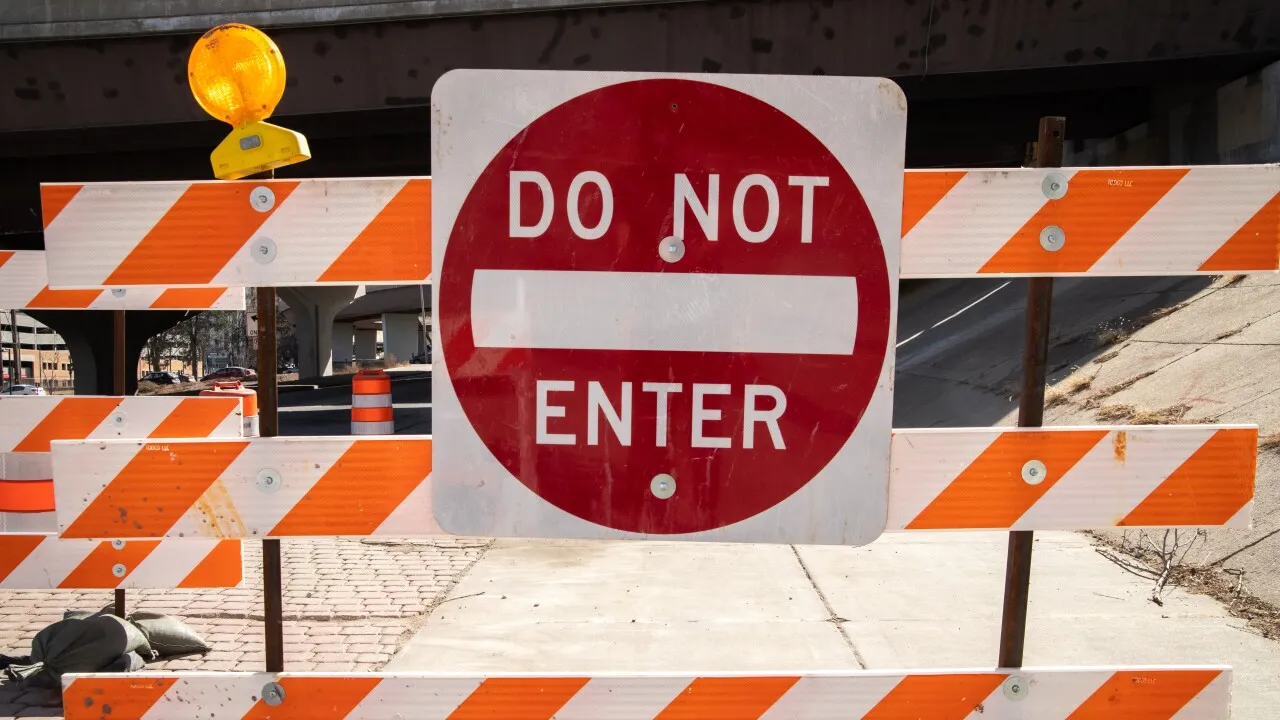CLEVELAND, Ohio — In a city where the rhythm of life is dictated by the hum of tires on asphalt, the summer of 2025 has become a test of patience for drivers. Orange cones, detours, and closed ramps on key highways, including I-480, I-77, and State Route 176, have turned daily commutes into a real quest. The Ohio Department of Transportation (ODOT) closed several ramps due to aging bridges and a lack of funding, forcing drivers like Jane Oaks, a GrubHub delivery person, to navigate a labyrinth of detours. While federal funds promise updates, Cleveland faces the painful realities of an outdated infrastructure where each repair is a step toward safety but also a source of chaos.
Chaos on I-480 and Beyond
This week, ODOT closed the eastbound Ridge Road exit ramp on I-480, adding it to the list of already blocked exits: I-480 east to I-77 north and I-480 west to I-77 south, which were closed in April. These three ramps, located at the heart of Cleveland’s transportation hub, are part of a large-scale project to replace bridge decks, which, according to Brent Kovax, an ODOT spokesperson, “are in critical condition.” “On Ridge Road, potholes had become so severe that driving there was unsafe,” he explained to WKYC.
For Jane Oaks, who makes a living delivering food, these closures mean additional miles and lost time. “If you’re coming from the east, you have to go further to Transportation Boulevard and turn around,” she says. “And if you’re coming from the west, it’s even worse: there’s no exit at West 14th on SR-176, and you get stuck in traffic.” Her frustration reflects the mood of thousands of drivers who traverse these detours daily. On X (formerly Twitter), user @CleCommuter complains: “I-480 is a nightmare. Why are all these closures happening at once?”
The problems aren’t limited to I-480. The eastbound ramp onto East 55th Street on I-90 recently reopened after two months of repairs, but drivers barely had time to breathe a sigh of relief, as ODOT is already planning to close the eastbound I-480 ramp to Ridge Road this fall. “It’s like a chess game where we, drivers, always lose,” joked Oaks.
Why All at Once?
According to Kovax, the coincidence of closures is not a whim but a consequence of two factors: the urgent need for repairs and limited funding. “We plan projects based on what’s worst and where the money is,” he explains. Many bridges in Cleveland, built in the 1960s–1980s during the interstate boom, have reached the end of their service life. The American Society of Civil Engineers (ASCE) in 2021 rated Ohio’s infrastructure at “C+,” noting that 7% of the state’s 27,000 bridges are in “poor” condition.
The Federal Infrastructure and Jobs Act of 2021, which allocates $1.2 trillion, sparked repairs, but, as Craig Haberbrant, director of ASCE’s third region, notes, that’s not enough. “These investments are just the beginning,” he says. “Most bridges need re-funding every 40–50 years, and we are decades behind.” In 2025, ODOT will spend a record $3.2 billion on 955 projects across the state, but only a portion of that funding reaches Cleveland, where needs far exceed resources.
Economist from Case Western Reserve University, Susan Helper, adds that the lack of systemic funding forces ODOT to “fight fires” instead of undertaking comprehensive upgrades. “Cleveland relies on its highways, but we’ve underfunded their maintenance for years,” she explains. “Now we’re paying the price in traffic jams and detours.”
Transportation Hub in Stress
The closures on I-480 and I-77 are particularly significant because these highways are the arteries connecting suburbs to downtown Cleveland and Hopkins Airport. According to ODOT data, I-480 carries 150,000 vehicles daily, and the closure of ramps to I-77, which will last until September, forces drivers to detour via Transportation Boulevard, adding up to 20 minutes to their trips.
Local businesses also feel the impact. Cafe owner in Brooklyn Park, Michael Rodriguez, complains that customers avoid the area due to the traffic jams. “Sales have dropped by 15%,” he said. “People don’t want to be stuck in traffic just to get coffee.” User @BrooklynOHBiz on X writes: “ODOT is killing small businesses with these closures. Who will compensate us for our losses?”
Aggressive driving behavior worsens the situation. Oaks reports drivers “tailgating, braking sharply, and honking as if it’s my fault.” According to Cleveland police, incidents related to road aggression increased by 8% in 2025, partly due to congestion.
Light at the End of the Tunnel?
ODOT promises that the ramps from I-480 to I-77 and the westbound Ridge Road will open at the beginning of September, but in the fall, repairs on the eastbound I-480 ramp to Ridge Road will begin, continuing the cycle of detours. “We’re doing our best to minimize inconvenience,” Kovax assures. “But safety is our priority.”
Haberbrant from ASCE sees these repairs as a chance for Ohio. “Every new bridge deck is an investment in the future,” he says. “But we need a new federal law to ensure stable funding.” While Congress debates the next infrastructure package, Cleveland drivers must endure the chaos.
For Oaks and thousands of others, these projects are not abstract numbers but daily trials. “I understand that bridges need repairs,” she sighs. “But why do I feel like we, drivers, are paying the highest price?” While Cleveland updates its arteries, the community learns to maneuver not only between cones but also between disappointment and hope for better roads.



